CIMA’s mission to promote the appreciation of modern Italian art on the international stage reverberates louder than ever as New York City sees a proliferation of Italian modern and contemporary art this spring. Some shows highlight artists who have long eluded American viewers, like Fausto Melotti at Hauser & Wirth, while others illuminate new visual meaning through the concert of pairs, like Alighiero e Boetti and Mel Bochner at the new Lower East Side gallery TOTAH.
There are three sites one can currently see Boetti’s work in New York. Gladstone Gallery, in collaboration with the Fondazione Alighiero e Boetti in Rome, presents Alighiero e Boetti’s Tutto works. Following the quintessential colorful grids of letters that spell out phrases (Arazzi) and world maps (Mappe), this exhibition features the artist’s final series of embroidered works, worked on until his death in 1994. Tutto or “all,” “everything,” is a visual cacophony weaving together the themes and images that comprise Boetti’s oeuvre: twins, hardware, lamps, letters, towers, continents, and abstractions on tapestries edge to edge.
Alighiero e Boetti, “Tutto” is on view at the Gladstone Gallery (130 E 64th St.), May 6 – June 30, 2016.
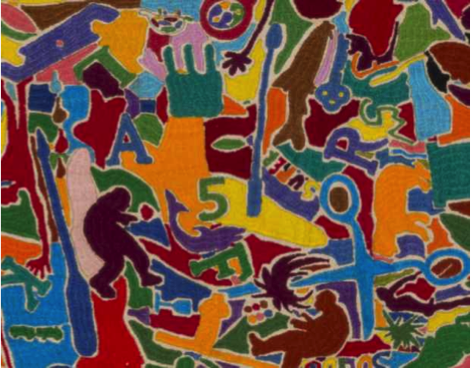
If Tutto is the image of Boetti’s sweeping aesthetic unity, then Verba Volant Scripta Manent at TOTAH seeks to unfold the nuanced poetics in the intersection of Boetti’s and Bochner’s communicative impulse. Despite their shared visual form, this exhibition marks the first time Boetti’s and Bochner’s works have been shown together. The exquisitely curated visual pile-up of speech is materially rich (tapestries and velvets abound) and far removed from quotidian conversation -testing the limits of language.
Verba Volant Scripta Manent is on view at TOTAH (183 Stanton Street), February 25 – May 15, 2016.
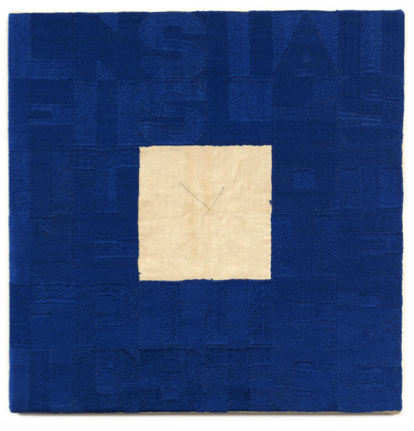
The Drawing Center presents Drawing Dialogues: Selections from the Sol LeWitt Collection, an exhibition featuring over one hundred works by more than sixty artists from LeWitt’s collection. The show examines mark-making in unexpected materials and the dialogues made between generations. Postcards written to and from LeWitt give a window into the rich history of artists once working in SoHo. The exhibition also features some works by Italian artists, including Boetti as well as Giulio Paolini, one of the focuses of CIMA’s 2016-2017 exhibition season.
Drawing Dialogues: Selections from the Sol LeWitt Collection is on view at The Drawing Center (35 Wooster Street), April 15 – June 12, 2016.
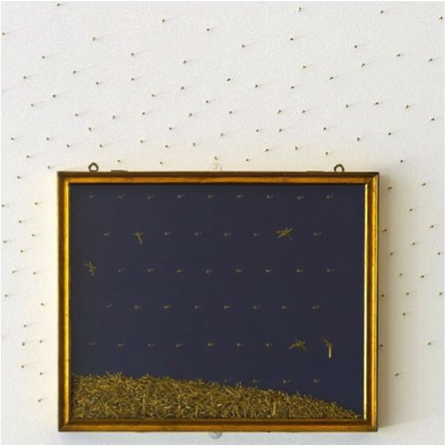
Alberto Biasi: Dynamic Stillness is the first exhibition at GR Gallery, a new gallery in the Lower East Side. It showcases over twenty of the kinetic pioneer’s works since the 1960s, including examples from his “Optico-Dynamic Reliefs”, “Torsions” and “Assemblages” series. La Voce interviews the artist on the retinal show here.
Alberto Biasi is on view at the GR Gallery, (255 Bowery), March 31- May 22, 2016
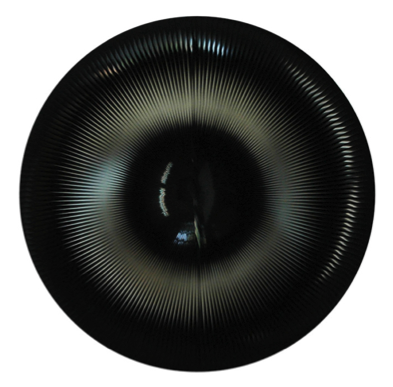
Hauser & Wirth presents, Fausto Melotti, the gallery’s debut exhibition of works by the late Italian sculptor, installation artist, and poet. The show celebrates the material breadth of the artist through drawings, ceramics, and sculptures, plaster bas-reliefs, and fantastical terracotta ‘Teatrini’. The variety communicates both the great innovations of modernist art in mid-century Italy as well as the language of his work which is both universal and highly personal. Melotti trained as a figurative artist under Adolfo Wildt at the Accademia do Brera in Milan, where he befriended fellow pupil Lucio Fontana and his interest shifted to a new abstract and non-objective art. The exhibition is curated by Douglas Fogle, former Chief Curator at the Hammer Museum, Los Angeles, and is accompanied by a new publication featuring historical material from the archive of Fondazione Fausto Melotti.
Fausto Melotti is on view at Hauser & Wirth, (32 East 69th Street), April 20-June 18, 2016
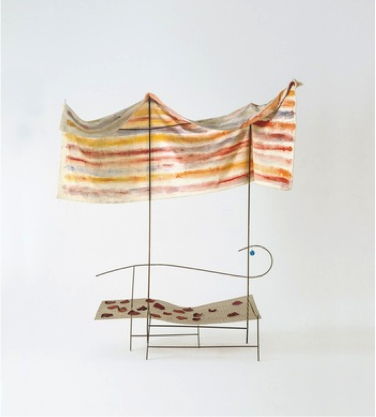
Enrico Castellani: Interior Space at Dominique Lévy boasts a selection of the artist’s large-scale shaped relief canvases presented in juxtaposition with more recent angular metallic paintings. It’s the first solo exhibition of the revered Italian artist that the gallery has held?, with works spanning from the 1960s nearly to the present, declaring Castellani’s break with the trajectory of painting by rupturing traditional format and surface.
Enrico Castellani: Interior Space is on view at Dominique Lévy, 909 Madison Avenue, April 7 – May 21, 2016.
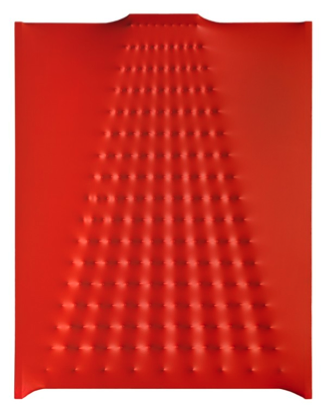
Robilant + Voena’s pop-up exhibition of Lucio Fontana investigates spatiality across the artist’s career. Fontana’s elegant exploitations of flatness through his ubiquitous gesture, ‘tagli’(slashes) are featured alongside lesser-known late works, metal sculptures and ceramic objects. The resultant is a carefully curated show demonstrating the breadth of techniques, phases and intricacies of Fontana’s legacy
Lucio Fontana is on view at Robilant + Voena’s temporary space at 24th East 80th Street, May 6-27, 2016
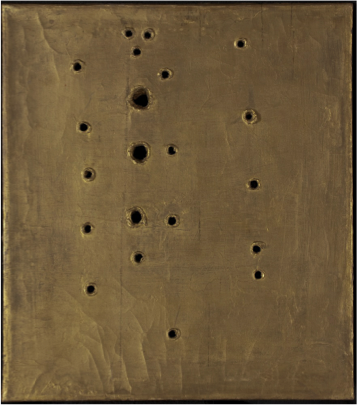
Sperone Westwater highlights the best-known formats of Mario Merz (predominantly from the early 1980s). Merz’s expressive range and central thematic concerns are made manifest through tables, shelters, and expansive unstretched canvases that incorporate three-dimensional attachments and organic materials. “Tavola a spirale” (Spiral Table), 1982, is comprised from an assortment of branches, fruit, and vegetables and echoes the artist’s onging interest in the Fibonacci sequence in its form: As the structure radiates from its’ locus point, it translates the organic progression of this principle in nature.
Mario Merz is on view at Sperone Westwater, (257 Bowery), April 30 –June 18, 2016
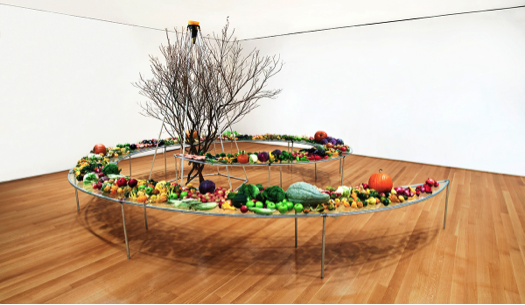
Currently on view at Peter Freeman, Inc. is a beautiful exhibition of Medardo Rosso’s work in bronze, co-presented by Amedeo Porro Fine Arts of Lugano and London. Rosso, who was the subject of CIMA’s second season in 2014-15, is perhaps best known for his sculptures in wax, but his work in bronze is particularly interesting– because the artist cast his sculptures himself rather than rely on commercial foundries. No two casts are the same, and this exhibition reveals the evidence of the artist’s working process, with nails, holes, and other casting detritus still evident on the bronze surfaces. The exhibition includes two examples of Rosso’s rarely seen and little known work making copies of antique sculptures: a sculpture of St. Francis and one of Niccolo’ da Uzzano, both after Donatello. The first exhibition to focus exclusively on Rosso’s bronzes, Medardo Rosso: Ten Bronzes offers a rare opportunity to engage with Rosso’s material process.
Medardo Rosso: Ten Bronzes is on view at Peter Freeman, Inc., (140 Grand Street), April 14–May 27, 2016

